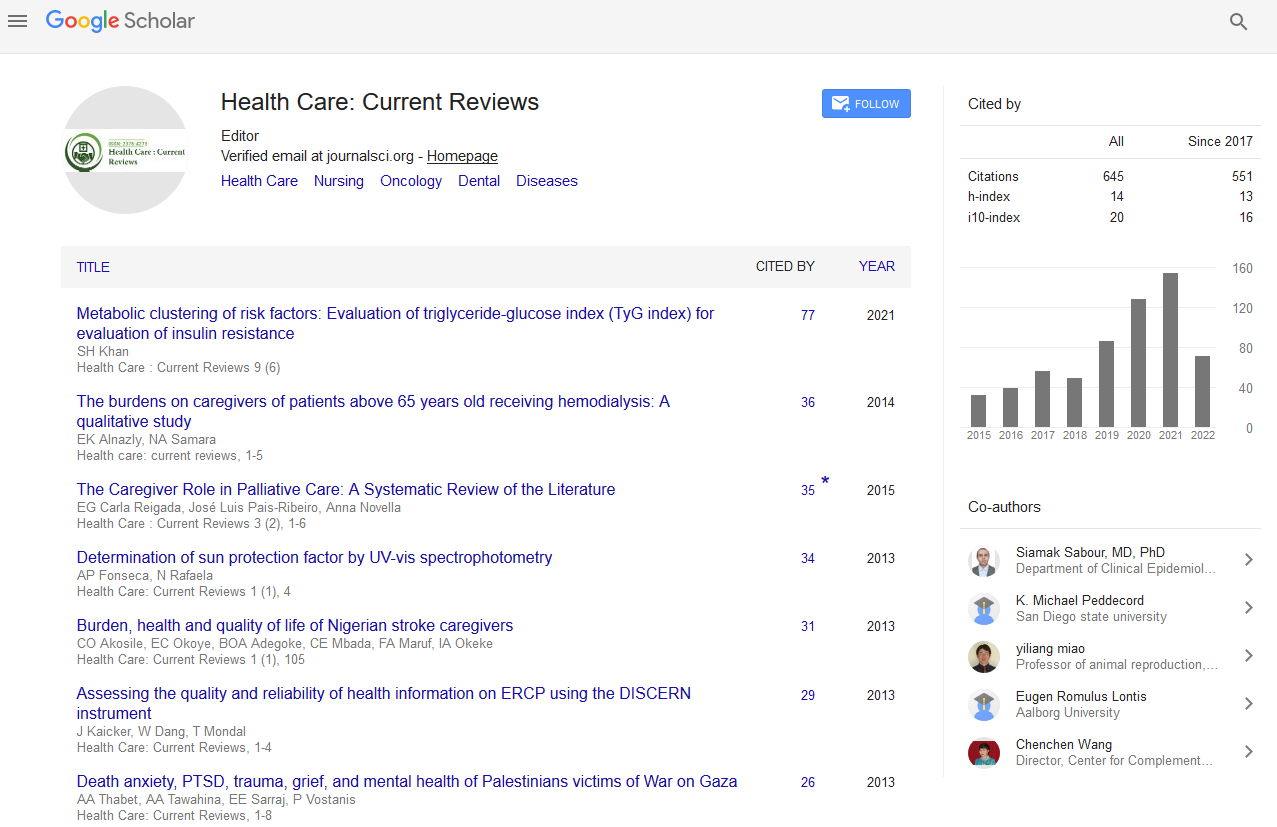PMC/PubMed Indexed Articles
Indexed In
- Open J Gate
- Academic Keys
- RefSeek
- Hamdard University
- EBSCO A-Z
- Publons
- Geneva Foundation for Medical Education and Research
- Google Scholar
Useful Links
Share This Page
Journal Flyer

Open Access Journals
- Agri and Aquaculture
- Biochemistry
- Bioinformatics & Systems Biology
- Business & Management
- Chemistry
- Clinical Sciences
- Engineering
- Food & Nutrition
- General Science
- Genetics & Molecular Biology
- Immunology & Microbiology
- Medical Sciences
- Neuroscience & Psychology
- Nursing & Health Care
- Pharmaceutical Sciences
Abstract
Youth Friendly Services Utilization and Associated Factors among Young People in Tehuledere District, Northeast Ethiopia: A Cross-sectional Study
Background: The world comprises the largest generation of young people aged between 10 and 24 years in history. Hence ensuring their health and future is generally recognized as a key development priority in many countries. Youth friendly services have been recognized as an appropriate and effective strategy to address sexual and reproductive health needs of young people. Even if the government of Ethiopia had been implementing strategic framework to enhance reproductive health and well being of young people, there is limited evidence on level of services utilization. Thus, this study was conducted to assess youth friendly services utilization and associated factors among young people in Tehuledere district, Northeast Ethiopia, 2018.
Method: A Community based crossectional study was conducted in Tehuledere district from December 1 to 15, 2018. Multi stage sampling was used to select participants. Ten kebeles were selected by simple random sampling method. The total sample size was allocated proportionally to population size. Finally, 572 study subjects were included in the study. Binary logistic regression analysis model was used to identify factors associated with youth friendly services utilization of young people. Adjusted odds ratio with 95% confidence interval and p-value ≤ 0.05 were used to show strength of association between the dependent and independent variables. Ethical clearance was obtained from the Ethical Review Committee of Wollo University, College of Medicine and Health Sciences.
Results: This finding showed that 34.31% of young people were used youth friendly service. Respondents who lived within 30 minutes walking distance from the health facility were used the service 3 times than those who lived more than 30 minutes walking distance [AOR=3.00, 95% CI (1.89, 4.74)]. Respondents who had convenient perception on the working hours of the health facilities were utilized the services 1.7 times than those who had inconvenient perception [AOR=1.69, 95% CI (1.07, 2.68)]. Respondents were participated in community dialogues were 1.8 times utilized the services than those who were not participated [AOR=1.77, 95% CI (1.12,2.78)]. Participants who had information about youth friendly services were 9.7 times utilized the services than those who had no information [AOR= 9.76, 95% CI (6.03, 15.79)]. Youths who faced sexual and reproductive illness were 3.6 times utilized the services than those who did not faced [AOR= 3.64, 95% CI (1.75, 7.60)].
Conclusion: Less than half of the young people were utilized youth friendly health services. Accessibility of health facilities, convenient working hours of health facilities, participation of youths in community dialogues and information about youth friendly services were factors associated with youth friendly health services utilization .
Published Date: 2020-09-18; Received Date: 2020-08-22


